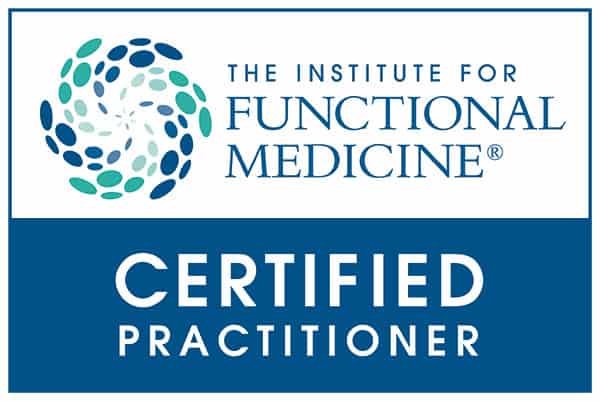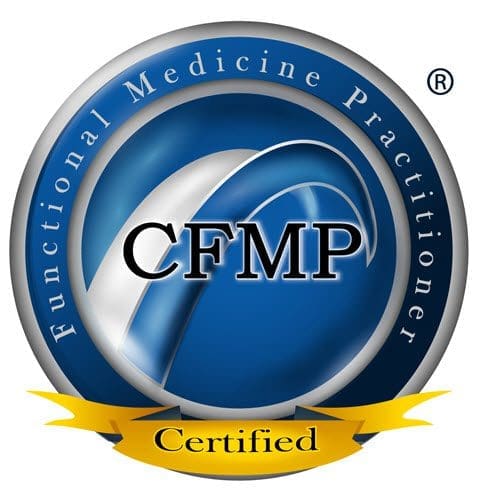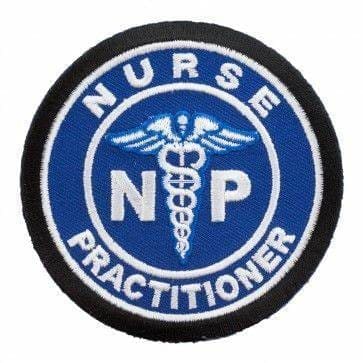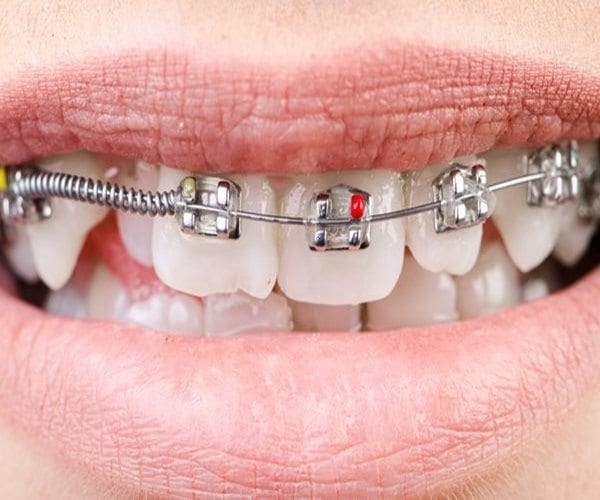
by Dr Alex Jimenez DC, APRN, FNP-BC, CFMP, IFMCP | Natural Health, Wellness
Many studies have found that the first 1,000 days after conception have a strong influence on a person’s life expectancy and susceptibility to chronic disease. Low birth weight is one of the main markers used to identify stress in early life, such as poor nutrition during gestation, but it can be used only until birth — about 280 days — and is far short of the first thousand days.
But researchers from the University of Washington suggest that an asymmetric lower face is a strong marker that also suggests early life stresses.
“Asymmetries in the skull and teeth have been used for decades by anthropologists to mark environmental stress, but they have only rarely been used in living populations,” said Philippe Hujoel, a professor in the UW School of Dentistry.
“Such lower-face asymmetries can be assessed by looking at the dental bite in the permanent teeth — an exam that can be completed in seconds and with more certainty than a mother’s recall of birth weight and more ease than a search for a birth certificate.”
Hujoel described a crooked, or asymmetric, bite as the teeth biting backward or forward on one side of the face and normally on the other side.
He emphasized that crooked teeth, overbites and underbites are different than an asymmetric bite and can be associated with both asymmetric and symmetric bites.
Hujoel and his colleagues studied data gathered from 1966 to 1970 in a group of 6,654 U.S. adolescent 12- to 17-year-olds. The study found that one in four had lower-face asymmetries.
“Lower-face asymmetries were common in a generation that became typified by an epidemic of diabetes and obesity in adulthood,” noted Hujoel.
He says that further research is needed to identify whether lower-face asymmetries can predict chronic diseases in living populations in the same way that skull asymmetries have been associated with degenerative diseases in long-deceased populations.
Earlier studies have linked facial symmetry with health, but a British study published in 2014 found no links. It did, however, find a small correlation between symmetry and higher IQ.

by Dr Alex Jimenez DC, APRN, FNP-BC, CFMP, IFMCP | Natural Health, Remedies, Wellness
It’s that time of the year again when spring brings forth all her colorful glory — along with a host of potential allergens.
“It’s definitely pollen season,” Dr. Andy Nish, an allergy and asthma specialist from Gainesville, Ga., tells Newsmax Health. “And while we can help control our immediate environment, pollens can blow in from miles away to make our lives miserable.”
Allergies are the sixth leading cause of chronic illness in the United States with an annual cost in excess of $18 billion. More than 50 million Americans suffer from allergies each year.
Allergic rhinitis, often called hay fever, is a common condition that causes symptoms such as sneezing, stuffy nose, watery eyes and itching of the eyes, nose or the roof of the mouth.
You can try using antihistamines when the pollen hits and a nasal steroid prior to the onset of your seasonal woes, says Nish. But experts agree that natural remedies may be just as effective without the potential side effects of decongestant medications.
“When a person with an allergy encounters the offending substance, the immune system interprets it as the enemy,” Dr. Ellen Kamhi, Ph.D, tells Newsmax Health. “To help ward off the intruder, the human body activates antibodies and releases a substance called ‘histamine.’
“Allergy medications are called antihistamines because they attempt to turn off this natural, albeit overzealous body reaction. The result is that other body tissues get into the battle and impose a number of unpleasant side effects for the allergy sufferer. These can include annoying reactions such as rashes and scratchy throat but may become frightening, such as a closed throat and difficulty breathing.”
Kamhi says it’s important to identify the trigger and try to eliminate it from your environment.
“Interestingly, you may be eating honey made from the exact flower pollen that you are sensitive to,” she says. “The use of natural, nutritional herbs and supplements may be an extremely useful therapy to beat allergies along with changes in diet and lifestyle.”
Here is her recipe for an anti-allergy cocktail:
- 2000 milligrams powdered, buffered vitamin C.
- 100 milligrams B-6.
- 1000 milligrams magnesium.
- 1000 milligrams calcium.
- 250 milligrams bioflavonoids.
Mix the above ingredients in ½ glass of water and drink twice daily during an allergy attack.
Other helpful allergy-fighting herbs include:
Bromelain. This digestive enzyme from pineapple and quercetin, one of the bioflavonoids work well together to offset an allergic reaction
Milk thistle. This herb acts as a protector and regenerator of the liver and helps repair damaged tissue caused by allergens while supporting the actions necessary to deal with the accompanying symptoms.
Echinacea and goldenseal. These two herbs also work together to combat both the discomfort of allergies as well as reduce excess mucous from the nasal and respiratory tract, says Kamhi, the author of “The Natural Medicine Chest.”
Licorice. This is the most widely studied adrenal herb and has anti-inflammatory actions similar to the glucocorticoids — which are produced by healthy adrenals — that help resolve allergic reactions.
Green tea. This popular beverage is widely recognized as one of the best super foods for many conditions and it’s also beneficial for allergies. It contains a potent antioxidant called epigallocatechin or EGCG that impacts allergies at a cellular level by reducing inflammation.
Nish says that you can also reduce allergens by keeping windows in your home and car closed during the pollen season.
“Stay indoors during high pollen days and don’t dry laundry outdoors. Avoid bathing or brushing your pets outside as they can carry pollen into the home,” he adds.
“Buy a humidity gauge and try to aim for between 40 and 50 percent humidity in the home to deter unwanted houseguests like dust mites and mold. If the percentage is higher, you may want to invest in a good dehumidifier.”

by Dr Alex Jimenez DC, APRN, FNP-BC, CFMP, IFMCP | Fitness, Health, Wellness
The perfect pair
When walking you need your shoes to handle that repetitive heel-to-toe rolling motion. After all, “a 150-pound woman’s body encounters between 900,000 and 1,350,00 pounds of impact over a three-mile walk,” says Paul Langer, DPM, author of Great Feet for Life.
So make sure your kicks are comfy and supportive—a poor fit can lead to injury. And choose ones that are secure across the instep and in the heel, but roomy enough to wiggle your toes. Here, shoes that will protect your feet whether you’re fitness walking or simply commuting.
Watch the video: How to Burn More Fat When Walking for Exercise
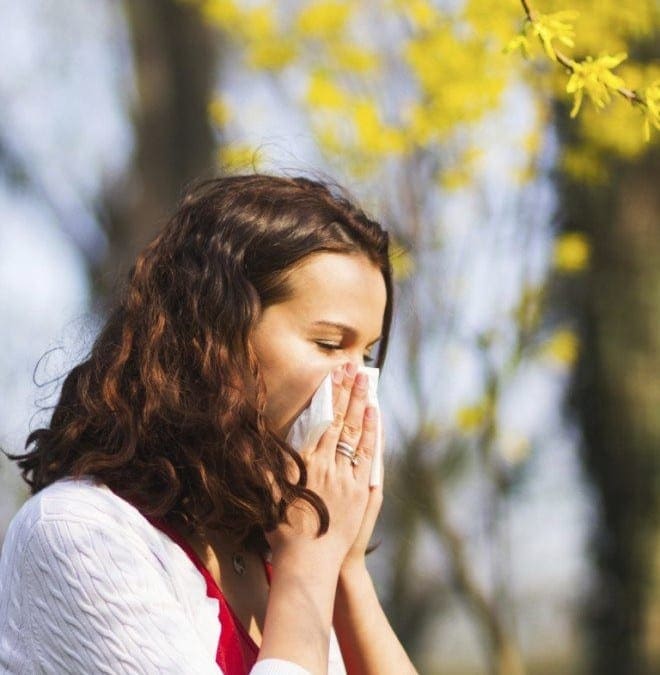
by Dr Alex Jimenez DC, APRN, FNP-BC, CFMP, IFMCP | Remedies
It’s that time of the year again when spring brings forth all her colorful glory — along with a host of potential allergens.
“It’s definitely pollen season,” Dr. Andy Nish, an allergy and asthma specialist from Gainesville, Ga., tells Newsmax Health. “And while we can help control our immediate environment, pollens can blow in from miles away to make our lives miserable.”
Allergies are the sixth leading cause of chronic illness in the United States with an annual cost in excess of $18 billion. More than 50 million Americans suffer from allergies each year.
Allergic rhinitis, often called hay fever, is a common condition that causes symptoms such as sneezing, stuffy nose, watery eyes and itching of the eyes, nose or the roof of the mouth.
You can try using antihistamines when the pollen hits and a nasal steroid prior to the onset of your seasonal woes, says Nish. But experts agree that natural remedies may be just as effective without the potential side effects of decongestant medications.
“When a person with an allergy encounters the offending substance, the immune system interprets it as the enemy,” Dr. Ellen Kamhi, Ph.D, tells Newsmax Health. “To help ward off the intruder, the human body activates antibodies and releases a substance called ‘histamine.’
“Allergy medications are called antihistamines because they attempt to turn off this natural, albeit overzealous body reaction. The result is that other body tissues get into the battle and impose a number of unpleasant side effects for the allergy sufferer. These can include annoying reactions such as rashes and scratchy throat but may become frightening, such as a closed throat and difficulty breathing.”
Kamhi says it’s important to identify the trigger and try to eliminate it from your environment.
“Interestingly, you may be eating honey made from the exact flower pollen that you are sensitive to,” she says. “The use of natural, nutritional herbs and supplements may be an extremely useful therapy to beat allergies along with changes in diet and lifestyle.”
Here is her recipe for an anti-allergy cocktail:
- 2000 milligrams powdered, buffered vitamin C.
- 100 milligrams B-6.
- 1000 milligrams magnesium.
- 1000 milligrams calcium.
- 250 milligrams bioflavonoids.
Mix the above ingredients in ½ glass of water and drink twice daily during an allergy attack.
Other helpful allergy-fighting herbs include:
Bromelain. This digestive enzyme from pineapple and quercetin, one of the bioflavonoids work well together to offset an allergic reaction
Milk thistle. This herb acts as a protector and regenerator of the liver and helps repair damaged tissue caused by allergens while supporting the actions necessary to deal with the accompanying symptoms.
Echinacea and goldenseal. These two herbs also work together to combat both the discomfort of allergies as well as reduce excess mucous from the nasal and respiratory tract, says Kamhi, the author of “The Natural Medicine Chest.”
Licorice. This is the most widely studied adrenal herb and has anti-inflammatory actions similar to the glucocorticoids — which are produced by healthy adrenals — that help resolve allergic reactions.
Green tea. This popular beverage is widely recognized as one of the best super foods for many conditions and it’s also beneficial for allergies. It contains a potent antioxidant called epigallocatechin or EGCG that impacts allergies at a cellular level by reducing inflammation.
Nish says that you can also reduce allergens by keeping windows in your home and car closed during the pollen season.
“Stay indoors during high pollen days and don’t dry laundry outdoors. Avoid bathing or brushing your pets outside as they can carry pollen into the home,” he adds.
“Buy a humidity gauge and try to aim for between 40 and 50 percent humidity in the home to deter unwanted houseguests like dust mites and mold. If the percentage is higher, you may want to invest in a good dehumidifier.”

by Dr Alex Jimenez DC, APRN, FNP-BC, CFMP, IFMCP | Fitness, Health, Wellness
This article originally appeared on Time.com.
Running is a simple and efficient way to exercise: all you need is a pair of shoes. It’s been shown to lower a person’s risk for heart disease and cancer, possibly by regulating weight and blood pressure. Now a recent study, published in the journal Progress in Cardiovascular Disease last month, reports that people who run tend to live about three years longer than those who don’t.
The researchers, who have studied the benefits of running in the past, decided to look at available research and investigate whether other forms of exercise like walking and biking provide the same benefits, or if runners have a special advantage.
The study’s authors found that while other types of exercise like walking and cycling were linked to a longer lifespan, it wasn’t to the same degree as running. The researchers calculated that a one-hour run may translate to an additional seven hours added to a person’s life. The benefits capped out at about three years, and the researchers found that the improvements in life expectancy leveled out at about four hours of running per week. More running wasn’t found to be significantly worse for a person, but the researchers say there are no further apparent longevity benefits.
RELATED: 7 Surprising Facts About Running
However, the researchers only found an associational relationship between running and longevity. Their data showed that people who run tend to live longer lives, but not that running specifically increases a person’s lifespan. Runners tend to have other healthy lifestyle behaviors like maintaining a healthy weight, not smoking and only drinking low-to-moderate amounts of alcohol, the authors note. Still, the findings suggest running is an especially effective form of exercise.
RELATED: 7 Running Injuries and How to Avoid Them
The study also found that runners who also do other types of physical activity have the same lower risk of early death, though combining running with other exercise is “the best choice,” the researchers write. (Federal guidelines recommend both aerobic exercise, like running, and strength training for optimal health.) They also acknowledge that it’s not yet clear how much running is safe, or if a person can run too much.
“Running may have the most public health benefits, but is not the best exercise for everyone since orthopedic or other medical conditions can restrict its use by many individuals,” the authors concluded.

by Dr Alex Jimenez DC, APRN, FNP-BC, CFMP, IFMCP | Diets, Fitness
You may be doing your body good by taking that morning run or working up a sweat at the gym. But when you also work up a thirst and take a swig from your trusty refillable water bottle you may actually taking a swig of harmful germs.
New research shows that an incredible amount of bacteria — including E. Coli and salmonella — may be lurking in and on your water bottle.
Laboratory tests by Treadmill Reviews, a Minneapolis-based firm, analyzed 12 water bottles used by athletes and not washed for a week and found they had such high levels of bacteria that drinking from them would be like “licking a toilet seat.”
They tested four types of reusable bottles: A slide-top, screw-top, squeeze-top and straw-top. The researchers evaluated the amount of contamination in terms of “colony forming units,” or CFUs, of bacteria per square centimeter. Here are their findings:
- The bottles contained an average of 300,000 CFU of bacteria. That’s six times as much bacteria as you’d find on your pet’s food bowl. And much of the bacteria was the kind that makes you sick.
- The slide-top bottles contained the highest amount of bacteria: A whopping 933,340 CFU. They also had the most gram-positive germs which have been linked to skin infections, pneumonia and blood poisoning.
- Squeeze-top bottles were next with 162,000 CFU followed by screw-top vessels with 160,000 CFU. These also housed 99 percent of the harmful bacteria.
- Straw-top bottles were the clear winners with only 25 CFU. But that’s only 2 CFU less than the average home toilet seat. It is thought that these are safer because water drips down to the bottom of the straw rather than hang out at the top attracting moisture-loving germs.
“Based on our test results, we suggest opting for a straw-top bottle, both for the prevalence of bacteria and the lack of harmful germs,” says the fitness Website. They suggested that stainless steel water bottles are a better choice than plastic which may also contain Bisphenol A, otherwise known as BPA, a chemical that can lead to cancer, diabetes, and other illnesses.
But by far the best option, says the website Aquasana.com, is to use glass water bottles and run them through the dishwasher or wash thoroughly by hand after every use.
By comparison, other household germy hot spots include:
- Toothbrush holder, 331,848 CFU.
- Pet bowl, 47,383 CFU.
- Kitchen sink, 3,191 CFI.
- Cutting board, 6.8 CFU.
“Harmful bacteria and viruses lurk in moist locations such as the kitchen and bathroom and can be easily transported into your mouth by using an old toothbrush, sponge or other common household item,” Dr. Donald Marks tells Newsmax Health.
The New Jersey-based infectious disease expert, who also holds a Ph.D. in microbiology and immunology, makes the following recommendations to avoid home contamination:
Sponges and wash clothes. You may think you are cleaning cups and saucers with these items but they can contain thousands of bacteria per square inch so you’re just spreading germs around. Put wash clothes in the washing machine and run the sponges through the dishwasher. Better still, replace sponges every two weeks,
Kitchen drain. Your kitchen drain contains more germs than your bathroom toilet. With the hot water running, pour a little baking soda down the drain daily.
Kitchen towels. A recent study showed that 7 percent of kitchen towels were contaminated with MRSA (methicillin-resistant Staphylococcus aureus). Wash them in hot water twice weekly.
Refrigerator water filters. These filters collect bacteria and mold over time. The rule of thumb is to change them twice annually. If you have a large family of water drinkers, every three months is a better time frame.
Toothbrush. Your toothbrush is a magnet for bacteria that can come from toilet spray, splashes from the sink when you wash your hands, or from your own mouth. Replace it every three or four months and never share a toothbrush. You may consider soaking it in an antibacterial solution after every use.
by Dr Alex Jimenez DC, APRN, FNP-BC, CFMP, IFMCP | Chiropractic
Many people are exposed to dangerously loud sounds at work and at play, and most of them don’t wear ear plugs or take other steps to prevent hearing loss, a recent U.S. study suggests.
Almost 49 million adults work in very noisy conditions, and more than one-third of them never use hearing protection, the study found. Among leisure pursuits, firearms pose a particular risk and just 59 percent of the 35 million U.S. gun users represented in the study wear hearing protection all the time.
“The problem here is both the number of people using firearms and the potential noise-inducing hearing loss from the repeated gunfire,” said senior study author Dr. Neil Bhattacharyya of Harvard Medical School and Brigham and Women’s Hospital in Boston.
“A rifle has an extremely loud single burst of sound and if you are firing hundreds of rounds, that can be very damaging, particularly without hearing protection,” Bhattacharyya said by email.
To assess how often U.S. adults are exposed to loud noise and how regularly they take steps to protect against hearing loss, researchers examined 2014 survey data representing 240 million people.
Overall, 22 percent were exposed to “very loud” sounds at work requiring them to shout to be heard at arm’s length. The exposures were for at least four hours a day, several days a week.
Roughly one in five people were exposed to loud sounds outside of work, and 62 percent of them didn’t use hearing protection, researchers report in The Laryngoscope.
With firearms, researchers found that one in five people who shot more than 10,000 rounds of ammunition in the past year never used hearing protection. Most of the firearm-related noise exposure came during recreational shooting.
Lawn mowers were the most common source of non-occupational noise exposure.
Almost two-thirds of people around loud noises during recreational activities never used any hearing protection.
One limitation of the study is that it only included one year of survey data, the authors note. It also didn’t have medical records to document specific hearing or health problems associated with noise.
“Untreated hearing loss is associated with increased stress, depression and social withdrawal, and may exacerbate problems for those with cognitive changes such as dementia,” said Dr. Jennifer Derebery of the House Ear Clinic and Institute and the University of California Los Angeles David Geffen School of Medicine.
If people aren’t sure whether the noise around them is loud enough to damage their ears, they can get a sound meter app for their phone and use ear plugs or other protection whenever the app shows the sound is too loud, Derebery, who wasn’t involved in the study, said by email.
And there are good options for people to wear when they still need to hear the sounds around them, a concern for many hunters and concert goers.
“There are outstanding electronic ear muff and ear plug options that solve many of the complaints that recreational shooters and hunters have related to conventional hearing protection,” said Colleen Le Prell, an audiology researcher at the University of Texas at Dallas who wasn’t involved in the study.
“They allow quiet sounds, such as speech and sounds the hunter might be making as they walk, to be not only delivered but amplified, which can be very useful with someone who already has some hearing loss,” Le Prell said by email. “Hearing loss can be prevented, with the consistent and correct use of hearing protection devices.”
by Dr Alex Jimenez DC, APRN, FNP-BC, CFMP, IFMCP | UTEP (Local) RSS
Jessica Boyce has signed a national letter of intent to attend school and join the UTEP rifle team starting for the 2017-18 season, head coach Hannah Muegge announced Thursday.
“Moving our sights to next season, I strongly feel Jessica will be a great asset for us as we look to continue to improve upon our team goals and strengthen our team culture,” Muegge said. “Jessica has set some great goals as she aims forward to the collegiate level and the team is very excited to welcome her aboard.”
Boyce is on track to graduate from Maple Mountain High School (Spanish Fork, Utah) and intends to major in psychology.
Below is a brief bio on Boyce:
Boyce developed her love for competitive shooting by participating in the Utah High School Rodeo 3P sporter event in 2013, qualified for and took part in the 2014 High School National Finals.
2014-15 Utah High School Rodeo Rifle State Champion; began competing in precision rifle with the Springville Jr. Rifle Club in the fall of 2013. Also is a member of the Utah Precision Marksmanship Society and holds the range record in air rifle at the University of Utah.
Boyce competed in many NRA postal and sectional matches, receiving both local and national recognition, qualified for the Junior Olympics in 2015 (air rifle), 2016 (air rifle and smallbore) and 2017 (smallbore)
She helped her team take second place at the 2015 Civilian Marksmanship Program (CMP) Western Regional Matches … also took place in the event in 2016 and 2017; posted the seventh-best individual score to advance to the finals in 2017. That effort earned her an individual invitation to compete in the CMP 3P Nationals.
Boyce has spent the past four years has teaching hunter education classes and mentoring younger shooters at her club. Boyce loves to read, be in the outdoors and travel with her family, and has a great love for animals.
She intends to major in psychology at UTEP. Boyce is the daughter of Steven and Krista Boyce and the big sister to Katie, her shooting partner.

by Dr Alex Jimenez DC, APRN, FNP-BC, CFMP, IFMCP | UTEP (Local) RSS
A much-improved UTEP women’s golf team will look to surprise the field at next week’s Conference USA Championship, which tees off on Monday in Fort Myers, Fla.
“Because of the season we’ve had, we’ve got to win to continue on to regionals,” coach Jere Pelletier said on Thursday. “There are quite a few teams this year that are ahead of us. I think we are ranked sixth or seventh. But we have surprised them before, and I think the mindset is we don’t have anything to lose. We’ve just got to get out there and play and hopefully we can surprise them again.”
Six years ago, the Miners entered the C-USA Championship rated seventh among league teams but captured their first league title, overthrowing no. 13 Tulane and no. 42 Tulsa in the process.
UTEP has put together a strong season that included one tournament title and three runner-up finishes in the fall. The Miners appear to have regained their stride in the last two spring tournaments, tying for third place at the Little Rock/Arkansas State Invitational and tying for sixth at the Wyoming Cowgirl Classic.
The Miners have strength at the top of their lineup in sophomore Lily Downs (75.2 scoring average), senior Alisa Rodriguez (75.4) and junior June Ting (75.7). Downs and Ting have both claimed tournament titles this season. All three have picked up six top-20 finishes in 2016-17.
“You’re hoping everybody is peaking at the same time and playing their best,” Pelletier said. “We seem to be playing pretty good right now. Alisa, Lily and June have been steady all year. The key for us in the conference is going to be to get one of the other two players to play well. My senior Sofia [Castiello] is starting to play good, and my freshman Abbie (Anghelescu) has shown some real signs of improvement this spring and I think she’s going to play well.”
A total of 11 teams will participate in the championship at the par-72, 6,194-yard Verandah Golf Club. Eighteen holes will be played each day, Monday through Wednesday. Old Dominion enters as the favorite with a no. 63 ranking by GolfStat. UTEP is rated no. 126. Live stats will be available at www.golfstat.com.
The tournament was also in Fort Myers a year ago.
“Alisa and Sofia played [the course] well last year,” Pelletier said. “Lily played pretty well. And right now Lily seems to be playing the best of all three of them. I think it’s going to be a dogfight to see which one comes in first.”

by Dr Alex Jimenez DC, APRN, FNP-BC, CFMP, IFMCP | UTEP (Local) RSS
The UTEP track and field team return to action as they head to the Golden State for the Mt. SAC Relays (May 13-14) and the Jim Bush Collegiate Invitational (May 15).
It will be the first action for the Miners since competing in the Texas Relays two weeks ago.
Mt. SAC
Heading to Torrance, Calif. will see the 5 distance runners for the Miners on Friday. Daniel Cheruiyot in the 3,000m steeplechase set for a 4:30 p.m. PT start. Cheruiyot earned a fifth-place finish at the Texas Relays on March 29.
Three Miners will compete in the 10,000m run, Winny Koech and Gladys Jerotich will set to run at 6:00 p.m., followed by Antony Kosgei in the men’s open at 6:40 p.m. Cosmas Boit will compete in the 5,000m run set for 7:40 p.m.
UCLA Invitational
The second destination will see the Miners compete at the UCLA Drake Stadium on Saturday. Starting the day at 8:30 a.m., will be Abedola Akomolafe, Fayon Gonzales and Cierra Chenault in the hammer throw. Lucia Mokrasova and Tyler Ragin will compete in the long jump set for 10:00 a.m. Israel Ramsay returns to the high jump after placing second at the C-USA indoor championships.
Sophomore sensation, Tobi Amusan will race in the 100m dash set for 3:20 p.m. Amusan holds the nation’s fastest time in the 100m hurdles with a time of 12.63. Lilian Koech will run in the 800m, after posting the third-fastest time (2:08.51) in the C-USA this season registered at the Texas Relays. Competing in the 400m dash will be Ada Benjamin, Florence Uwakwe, Imani Adams and Madison Gibson.
On the men’s side, Emmanuel Korir makes his return to the track after winning the 800m NCAA Championship on March 10. The freshman has made an immediate impact on the track setting an indoor school record in the 800m (1:46.75). Korir also recorded a world best 1:14.97 during the indoor season in the 600m. The distance runner will compete in the 800m at 3:45 p.m., along with sophomore Jonah Koech.
Competing in the 1,500m run will be Michael Saruni and Evans Kiprono. Saruni had an outstanding performance at the Texas Relays where he set the second-fastest outdoor school time in the 800 (1:45.82). The mid-distance runner competed against the 2012 Olympic silver medialist (Leonel Manzano) and the collegiate record holder (Donivan Brazier) in Austin. Saruni and Kiprono will be set to run at 5:05 p.m.
For live updates follow @UTEPTrack on Twitter.












